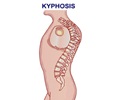Glucocorticoid-induced osteoporosis (OP) is now treatable with Teriparatide, a synthetic form of the human parathyroid hormone, according to recent research.
Glucocorticoid-induced osteoporosis (OP) is now treatable with Teriparatide, a synthetic form of the human parathyroid hormone, according to recent research.
Researchers found patients with glucocorticoid-induced OP who were treated with teriparatide for 36 months had a greater increase in bone mineral density (BMD) and fewer new vertebral fractures than those treated with alendronate. The findings of this study are published in the November issue of Arthritis & Rheumatism, a journal of the American College of Rheumatology (ACR).Glucocorticoids are steroid hormones that are naturally produced in the body or synthetically created compounds (drugs) used to reduce inflammation. These steroid drugs are used to control inflammation in patients with such autoimmune diseases as rheumatoid arthritis, systemic lupus erythematosus, and Crohn's disease as well as inflammatory conditions such as asthma. Glucocorticoid-induced osteoporosis occurs when patients taking steroid medications such as prednisone, prednisolone, dexamethasone, and cortisone exhibit reduced bone mass and bone strength.
This 36-month, randomized, double-blind, controlled trial, led by Kenneth Saag, M.D., from the University of Alabama, was conducted at 76 centers located in 13 countries. A total of 428 patients between the ages of 22-89 with confirmed OP who had received greater than 5 mg/day of prednisone or equivalent for more than 3 months preceding screening were included. Research measures included changes in lumbar spine and hip bone, BMD, changes in bone biomarkers, fracture incidence, and safety.
Study participants were randomly assigned to receive injectable teriparatide (20 μg/day) plus oral placebo (150 subjects) or oral alendronate (10 mg/day) plus injectable placebo (144 subjects). Supplements of calcium (1,000 mg/day) and vitamin D (800 IU/day) were provided to all study participants. Subjects kept a daily journal to record their steroid use.
Results show at 36 months the BMD for lumbar spine was 11% higher than baseline in the teriparatide group compared with 5.3% in the alendronate group. The BMD (teriparatide versus alendronate) for total hip was 5.2% versus 2.7% and 6.3% versus 3.4% for femoral neck. Researchers also observed fewer vertebral fractures in subjects taking teriparatide (1.7%) than those administered alendronate (7.7%). Higher levels of calcium concentrations were noted in the teriparatide group (21%) than in the alendronate group (7%).
"There is a significant number of individuals who are regularly treated with steroids to control inflammation which puts them at risk for developing osteoporosis. A need for therapies that mitigate this side-effect of steroid use and substantially improves bone mass is vital," commented Dr. Saag. The ACR estimates that diseases commonly treated with (cortico)steroids may affect more than 30 million Americans. "Our research shows that teriparatide is a safe and effective treatment for patients with steroid-induced OA and should be considered as a therapeutic option for those at high risk of bone fracture," recommended Dr. Saag.
Advertisement
Source-Eurekalert
RAS













